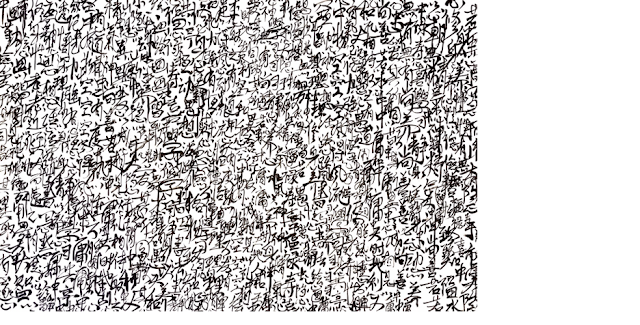One Stroke, One Reality
 |
| Being. (2019) |
The Path of Truth — Minimal Calligraphy as Meditation
Introduction: Simplicity as Depth
This work appears at first glance to be a single Chinese character, executed with bold brushstrokes on an empty white field. Yet it is not standard script — rather, it is a calligraphic abstraction, distilled to essential lines and arcs. The composition is accompanied by a red seal, grounding the piece in traditional practice. The work hovers between legibility and image, between calligraphy and painting.
1. Form and Gesture
-
Upper Stroke: A sharply rising diagonal, with a crossing stroke like a roof — suggestive of shelter, direction, or a mountain peak.
-
Central Curve: A flowing line resembling a human profile, or the character “人” (person), suggesting humanity embedded within the character.
-
Base Strokes: Two broad, sweeping horizontals that evoke ground, foundation, or waves. Their openness conveys stability as well as expansiveness.
The composition balances verticality and horizontality: aspiration rising upward, anchored by grounded base strokes.
2. Meaning and Symbolism
While abstracted, the form resonates with several possible readings:
-
It strongly suggests the character “真” (truth, authenticity) in a highly simplified and stylized form. The seal also aligns with this interpretation.
-
The profile-like curve within the structure places humanity inside the character of truth, reminding us that truth is not external but embodied in lived experience.
-
The roof-like stroke above suggests protection, dwelling, or the Daoist image of heaven sheltering earth.
-
The broad strokes at the base resemble water or ground, hinting at the Daoist dictum “上善若水” (The highest good is like water).
Thus, the work is a visual koan: truth as shelter, truth as humanity, truth as groundedness.
3. Calligraphic Spirit
The brushwork is not ornate — it is stripped down to essentials. This recalls the Zen calligraphic tradition, where a single character written with economy can embody years of practice and meditation.
-
Energy (气): The strokes are alive with breath — some thick and saturated, others fading and frayed at the edges.
-
Emptiness (空): The ample white space is not absence but presence, giving the strokes space to breathe and resonate.
-
Gesture as Essence: Instead of complexity, the calligrapher seeks purity of movement — one breath, one stroke, one truth.
4. Cross-Cultural Resonance
-
In Chinese tradition, this embodies the literati spirit: minimal ink, maximal resonance. It links to both Daoist ideas of simplicity and Chan/Zen aesthetics of sudden realization.
-
In Western modernism, it parallels abstract minimalism: Rothko’s color fields, Brancusi’s essential forms, or even the bold graphic logos of the 20th century. Yet unlike modernist reduction for form’s sake, this reduction serves spiritual meaning.
5. Interpretation: Truth as Path
This piece reminds us that truth is not complicated. It is not hidden in ornament but revealed in simplicity.
-
The upward stroke is the path of aspiration.
-
The central curve is the human within truth.
-
The horizontal base is the foundation, reminding us to remain grounded.
Like a Zen enso (円相), this character is less about reading than about experiencing. To look at it is to pause, to breathe, to dwell in the possibility that truth is not a concept but a way of being.
Conclusion: A Calligraphy of Essence
This single-character abstraction distills centuries of philosophy into a gesture. It unites heaven and earth, humanity and truth, emptiness and form. By reducing complexity to essentials, it becomes not only an artwork but a meditation tool — an invitation to practice sincerity, stillness, and grounding in everyday life.
Here, calligraphy transcends writing: it becomes an image of truth as path, truth as presence, and truth as simplicity itself.


Comments
Post a Comment